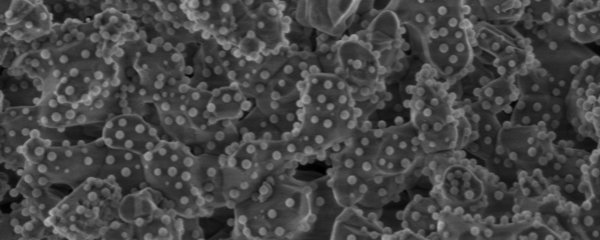
Nanoparticles for Cellular Therapeutics in Regenerative Medicine
The combination of nanocarriers with human (stem) cells offers a plethora of possibilities for enhancing the effectiveness of cellular therapeutics. Herefore nanosized capsules between 10 and 300 nm are used as carriers for drugs and diagnostic substances. Interdisciplinary research projects in this area include the design and synthesis of functionalized biodegradable nanoparticles/nanocapsules for imaging in vivo, site specific drug delivery, and controlled release of a drug within the targeted cells.
The ability to modify specific features of their physical, chemical and biological properties opens the way to manipulate their actions in biomedical applications. We have shown that elongated shapes have a major impact on the effectiveness of the uptake of nanoparticles into cells. We have investigated the contribution of different uptake mechanisms for the incorporation of nanoparticles into cells. While surface modifications with charged side groups alters the uptake behaviour in different cell types specific uptake first needs the suppression of unspecific interactions with the non-target cells. Herefore we used hydroxy ethyl starch based nanocapsules. In order to prove that they can be specifically targeted we grafted folic acid on these capsules and showed their uptake into receptor positive, but avoidance of uptake into receptor negative cell types.
Besides these parameters especially capsule thickness are critical parameters. By enhancing the biodegradability at low pH a highly effective intracellular delivery can be achieved. We have been introducing peptide sequences into the polymeric structures of nanocapsules such that overexpressed enzymes in specific cells can trigger the release. Furthermore their behaviour in plasma, blood and their uptake into cells as well as their distribution on a macro- and microscale is investigated in our group. All this enables us to specifically design nanocarriers for delivery of drugs and diagnostics to cells used in cellular therapeutics like stem cells or immune cells or in regenerative medicine where scaffolds are decorated with nanocarriers for a slow and sustained release of growth and differentiation factors. Furthermore these functionally enhanced scaffolds can be pre-seeded with cells ex vivo and then implanted in order to replace a diseased or injured tissue. This will lead to reliable regeneration of bone and cartilage, but also regeneration of skin can be achieved by these means.